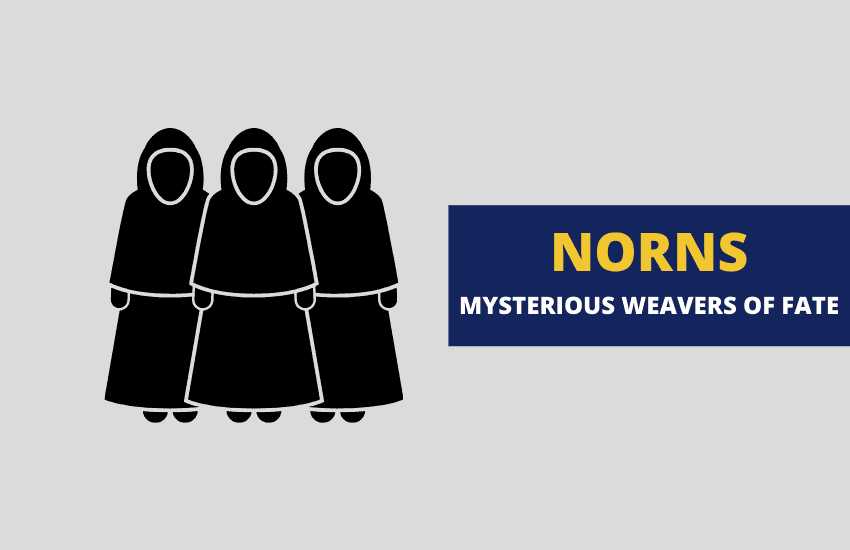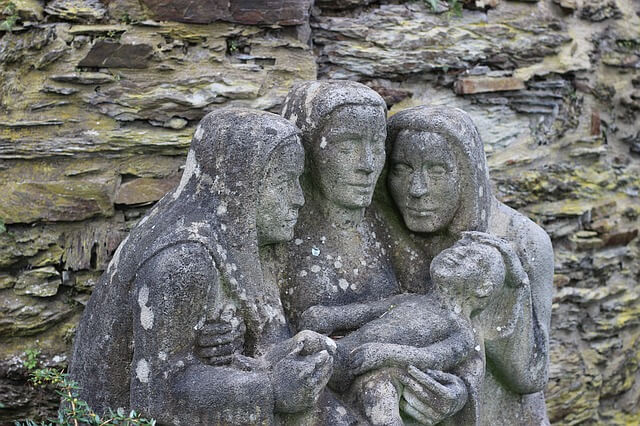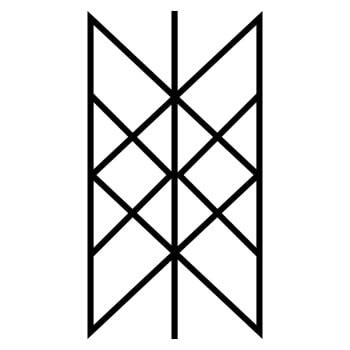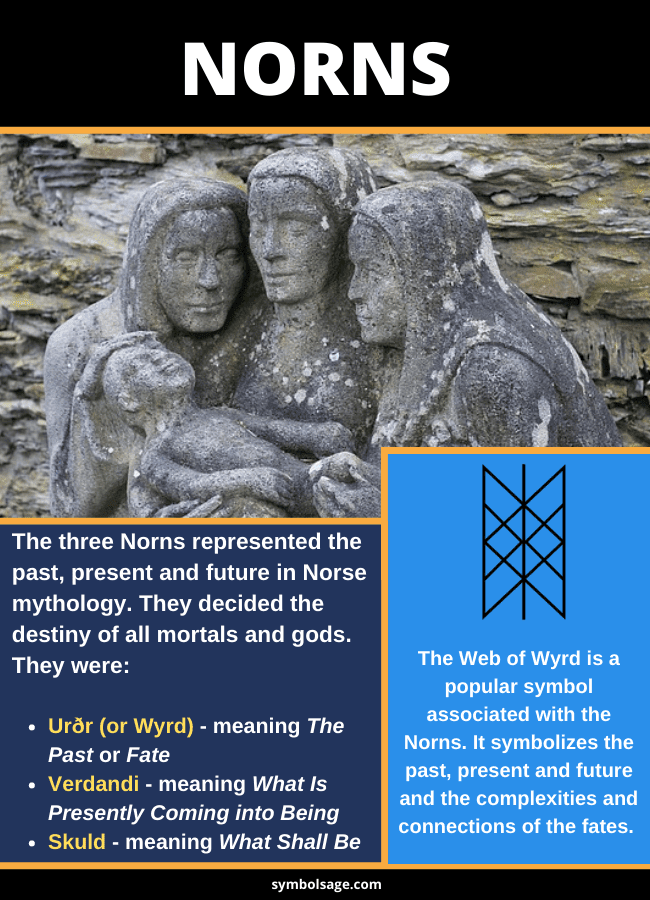
Table of Contents
The Norns in Norse mythology are very similar to the Greek Fates and to other female celestial beings from other religions and mythologies. Arguably, the Norns are the most powerful beings of all in Norse mythology – they govern the lives of gods and mortals, they decide what is going to happen, including when and how. However, they also do so with no discernible malice or intent.
Who are the Norns?
Depending on the source, the Norns, or Nornir in Old Norse, are either three or several female beings. Some poems and sagas describe them as ancient descendants of gods, giants, jötnar, elves, and dwarves, while other sources describe them as their own class of beings.
In either case, they are always women, usually described as young maidens or middle-aged women. However, they’re never depicted as old crones.
The Norns are described in different ways, depending on the source. The sources which speak of many different Norns often describe them as having some malicious intent, similar to witches. Sometimes they state that the Norns visited newborn children to benevolently bestow them with their fate.
The universally accepted version of the Norns, however, is that of the Icelandic poet Snorri Sturluson. He talks about three Norns – young and beautiful women, either jötnar or unspecified beings, who stood on the roots of the World Tree Yggdrasil and wove the fate of the world. Their names were:
- Urðr (or Wyrd) – meaning The Past or just Fate
- Verdandi – meaning What Is Presently Coming into Being
- Skuld – meaning What Shall Be

This is very similar to the Fates who are described as three spinners weaving the fabric of life.
What Did the Norns Do Other Than Weave?
Most of the time, Snorri’s three Norns Wyrd, Verdandi, and Skuld would sit beneath Yggdrasil. The World Tree in Norse mythology was a cosmic tree that connected all Nine Realms with its branches and roots, i.e. it held the entire Universe together.
The Norns, however, didn’t occupy any of the Nine Realms, they just stood beneath the tree, at its roots. Their location was marked by the Well of Urðr or the Well of Fate. There, they are described as doing several things:
- Weaving a piece of cloth.
- Carving symbols and runes into a piece of wood.
- Casting wooden lots.
These are the actions described in most poems and depicted in paintings with each Norn usually doing one of the three. There is, however, one other action Wyrd, Verdandi, and Skuld would do – to draw water from the Well of Fate and pour it over Yggdrasil’s roots so that the tree wouldn’t rot and the Universe could keep on going.
Were the Norns Worshipped?
Given their status as the governing beings of the entire Universe, one would assume that the ancient Nordic and Germanic people would pray to the Norns for good fortune. After all, the Norns commanded even the fate of the gods, meaning that they were even more powerful than them.
However, there is no archeological or literary evidence that anyone ever prayed to the Norns or worshipped them as they would a god. Even though it was the Norns, and not the gods, who governed the lives of mortals, it was the gods who received all prayers.
There are two main theories for that:
- Either the ancient people of Northern Europe did pray to the Norns and the evidence of that simply hasn’t survived to this day.
- The Nordic and Germanic people viewed the Norns as beings that couldn’t be swayed by peoples’ prayer and worship.
The latter theory is largely accepted as it does go with the overall view of Norse mythology that fate is impartial and inevitable – it doesn’t matter if it’s good or evil, what’s fated to happen will happen and there’s no way to change it.
What Is the Norns’ Role in Ragnarok?
If the Norns are more or less benevolent, at least according to Snorri Sturluson, why did they weave Ragnarok into being? In Norse mythology, Ragnarok is the End of Days event similar to Armageddon and to cataclysmic ends found in many other religions.
Unlike most of them, however, Ragnarok is entirely tragic – the Final Battle ends with a complete defeat for the gods and mortals by the forces of chaos and the end of the world. Some stories tell of several gods that survive Ragnarok but even then they don’t repopulate the world.
Does this imply that the Norns are malevolent after all, if they control all of existence and could prevent Ragnarok?
It doesn’t.
The Norse people didn’t view Ragnarok as something caused by the Norns even though they “fated it into being”. Instead, the Norse just accepted Ragnarok as the natural continuation of the world’s story. The Norse believed that Yggdrasil and the world as a whole are meant to eventually end.
People simply assumed that everything dies and so will the Universe.
Symbolism and Symbols of the Norns
The Norns symbolized the Past, Present, and Future, as evidenced by their names. It is worth pondering why so many seemingly unrelated religions and mythologies include a trio of female beings who weave fate.
In Norse mythology, as in most others, these three women are viewed as largely impartial – they simply weave what has to be woven and which becomes the natural order of things. In this way, these three beings also symbolized fate, destiny, impartiality, and inevitability.

The symbol most closely associated with the Norns is the Web of Wyrd, which is also called Skuld’s Net, after the Norn believed to have created the design. The Web of Wyrd is a representation of the various possibilities that occur in the past, present and future, and of our path in life.
Importance of the Norns in Modern Culture
The Norns may not be as well-known and popular as the Greek Fates today or even as many other Norse gods, but they are still frequently represented in modern culture.
There are countless paintings and sculptures of them through the centuries even after the Christianization of Europe and they are mentioned in many literary works as well. It’s believed that the three weird sisters in Shakespear’s Macbeth are Scottish versions of the Norns.
Some of their most modern mentions include the 2018 God of War video game, the popular Ah! My Goddess anime, and Philip K. Dick’s novel Galactic Pot-Healer.
Norns Facts

The three Norns are Urd, Verdandi and Skuld.
The Norns assign the destiny for each mortal and god. They weave cloth, carve symbols and runes into wood or cast lots to decide the destiny. The three beings also keep Yggdrasil alive by pouring water over its roots.
The Norns are extremely important in that they decide the destiny of all beings.
The Norns are neither good nor evil; they’re impartial, simply doing their tasks.
Wrapping Up
In many mythologies, the image of three women deciding the fate of other beings has been common. The Norns, however, appear to be the most powerful of such beings, as they had the authority to decide the fate of even the gods. As such, the Norns were arguably more powerful than the Norse gods.








